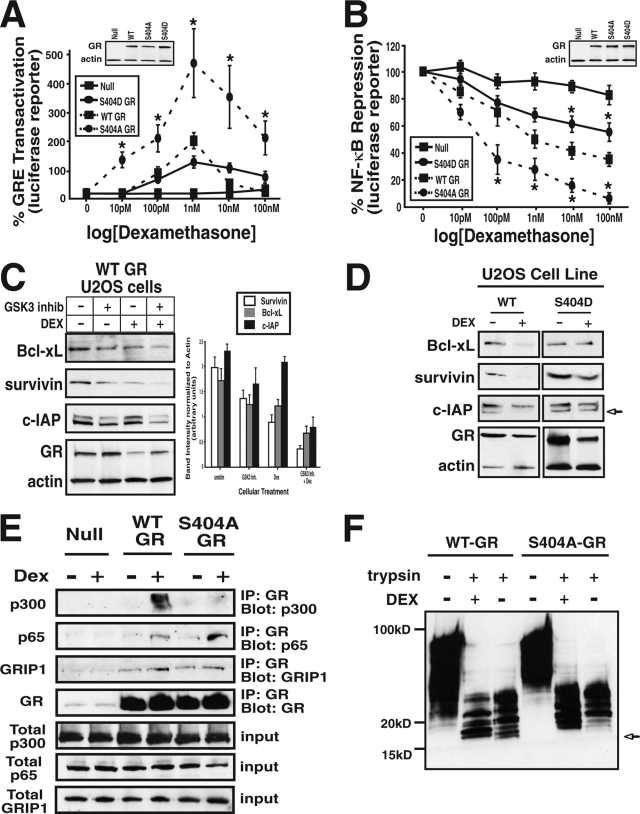FIG. 7.
Ser404 phosphorylation decreases GR function. (A and B) GR-null U-2 OS cells or those expressing WT-, S404A-, or S404D-GR were transiently transfected with pRL-Renilla and the GRE-luc (A) or MHC-luc NF-κB (B) luciferase reporters. Cells were then treated with Dex (0 to 100 nM) as indicated. After 20 h, the cells were lysed and analyzed for luciferase activity, which was normalized to the Renilla activity. Plotted are the normalized percentages of GRE transactivation or NF-κB transrepression by Dex (*, P < 0.05). (C) WT-GR-expressing U-2 OS cells were treated with the GSK-3α/β inhibitor BIO (5 μM) and Dex (100 nM) for 20 h. Cells were then lysed, analyzed by Western blotting, and probed with antibodies directed to the NF-κB regulated prosurvival genes Bcl-xL, c-IAP, and survivin. The protein band intensities were quantitated from three independent experiments and normalized to actin. (D) WT-and S404D-GR-expressing U-2 OS cells were treated with Dex for 20 h (100 nM), lysed, analyzed by Western blotting, and probed with antibodies directed to Bcl-xL, c-IAP, and survivin. (E) U-2 OS cells stably expressing WT- or S404A-GR were treated with 100 nM Dex for 1 h, and the cell lysates were immunoprecipitated and then probed with anti-p65/RelA, anti-CBP/p300, anti-GRIP1, or anti-GR antibodies. (F) WT- or S404A-GR were incubated with or without 1 μM Dex before digestion with 50 ng of trypsin/ml and analyzed by PAGE. See Materials and Methods for details.

